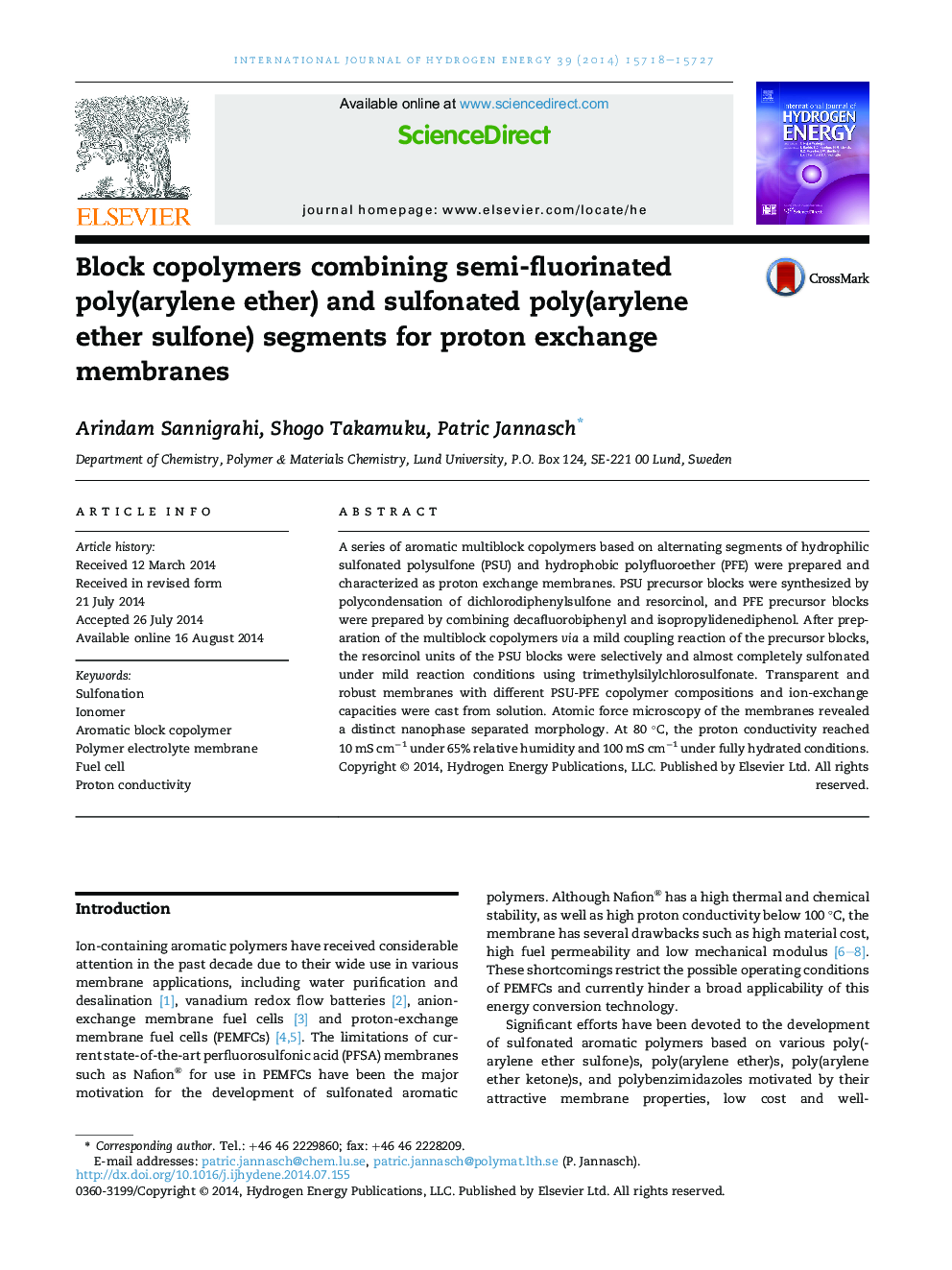| Article ID | Journal | Published Year | Pages | File Type |
|---|---|---|---|---|
| 1272410 | International Journal of Hydrogen Energy | 2014 | 10 Pages |
•Block copolymers prepared with alternating polysulfone and polyfluoroether segments.•The synthetic strategy allowed selective sulfonation of the polysulfone blocks.•The sulfonated aromatic copolymers formed robust nanostructured membranes.•At 80 °C the proton conductivity reached 10 mS cm−1 under 65% relative humidity.
A series of aromatic multiblock copolymers based on alternating segments of hydrophilic sulfonated polysulfone (PSU) and hydrophobic polyfluoroether (PFE) were prepared and characterized as proton exchange membranes. PSU precursor blocks were synthesized by polycondensation of dichlorodiphenylsulfone and resorcinol, and PFE precursor blocks were prepared by combining decafluorobiphenyl and isopropylidenediphenol. After preparation of the multiblock copolymers via a mild coupling reaction of the precursor blocks, the resorcinol units of the PSU blocks were selectively and almost completely sulfonated under mild reaction conditions using trimethylsilylchlorosulfonate. Transparent and robust membranes with different PSU-PFE copolymer compositions and ion-exchange capacities were cast from solution. Atomic force microscopy of the membranes revealed a distinct nanophase separated morphology. At 80 °C, the proton conductivity reached 10 mS cm−1 under 65% relative humidity and 100 mS cm−1 under fully hydrated conditions.
